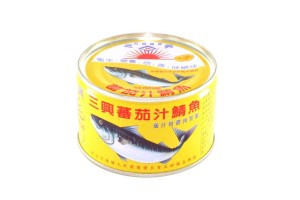The world major canned food production and export large country
 Canned food industry is one of China’s early-started food industries with a good foundation and fast development. Canned products are mainly positioned in the export and the decades of those exports had made a great contribution to the country. At the same time, the industry itself is also constantly adapted to the international market regarding the quality with the testing and safety requirements. For more than 20 years, China’s total production of canned food has reached more than 1000 million tons; canned food export volume has also exceeded 300 million tons with a foreign exchange of 5 to 6 billion dollars. Processing and export volume of canned food such as tomato, asparagus, bamboo shoots, yellow peach, orange and a number of first varieties, always keep the first position in the global market. From 1995 to 2015, it can be said that the canned food industry has the fastest development in 20 years. China has become the world’s major canned food production and export country.
Canned food industry is one of China’s early-started food industries with a good foundation and fast development. Canned products are mainly positioned in the export and the decades of those exports had made a great contribution to the country. At the same time, the industry itself is also constantly adapted to the international market regarding the quality with the testing and safety requirements. For more than 20 years, China’s total production of canned food has reached more than 1000 million tons; canned food export volume has also exceeded 300 million tons with a foreign exchange of 5 to 6 billion dollars. Processing and export volume of canned food such as tomato, asparagus, bamboo shoots, yellow peach, orange and a number of first varieties, always keep the first position in the global market. From 1995 to 2015, it can be said that the canned food industry has the fastest development in 20 years. China has become the world’s major canned food production and export country.
Domestic consumption of China Canned Food Market
 The development of China canned food market is not plain sailing. Especially in recent years, in the case of more and more enhanced health maintenance awareness among consumers, canned food suffered from a long shelf life, adding preservatives and other misunderstandings, but the industry as a whole has withstood the test. At this stage, the canned food industry still plays its due role in the social and economic development.
The development of China canned food market is not plain sailing. Especially in recent years, in the case of more and more enhanced health maintenance awareness among consumers, canned food suffered from a long shelf life, adding preservatives and other misunderstandings, but the industry as a whole has withstood the test. At this stage, the canned food industry still plays its due role in the social and economic development.
China’s canned food industry exist problems of overcapacity, disorderly competition, unreasonable product structure and lack of innovation capacity while there is a huge potential market to be stimulated. China currently has more than 300 canned food manufacturing enterprises with a total annual sale of 300 tons, 5 billion of US dollars and exporting to 150 countries and regions. But in recent years, the international market competitiveness has declined as the cost has been rising. Driven by double demand from the domestic and foreign market, canned food production enterprises are in need to adjust the production structure, acceleration in the pace of domestic exports to the domestic market has become a priority.
Canned food industry in China with its long history, needs to keep up with the actual trend. Under the new economic situation, the old industry faces more challenges. From the point of view of global trends in the development of canned food, the comprehensive group has gradually become the mainstream, which results in the closer focused resources that are constantly optimizing industrial chain and market monopoly. At the same time, the application of new materials, new packaging, and new technology, greatly accelerate the innovation pace.
From the perspective of the future demand, new concepts, new formats and new models including the food industry, manufacturing of circulation industry are emerging, it may bring an unexpected consumption demand. Moreover, due to a changing lifestyle of the younger generation, with a busier schedule, canned food industry in China is ushering new market opportunity.
China Canned Food Market: A decline in the domestic demand
Domestic market consumption needs to be stimulated. Compared with the fiery canned food in foreign markets, canned food in the domestic market is considered at his beginning. The popularity of fresh food which has carved up almost half the market share leading to the low consumption of canned food in China, the occurrence of food safety problem also affect the domestic consumption which is labeled “Stale”, “junk food” and “preservatives” and other various misunderstandings. At present, China’s canned food consumption level is still very low with only 6 kg per capita while the consumption is at 92 kg in the United States, 56 kg for the EU, and 30 kg for Japan. Changing the attitude of Chinese consumers to canned food, and stimulating the domestic demand is the strategy that the industrials should adopt.
The lack of brand building in the canned food industry is also the main problem in China. According to reports, at present China canned food enterprises which are able to export their own brand only account for 5% of the market ; enterprises which have their own brands and maintain a certain well-known brands only in some parts of the country account for 15%; the remaining 80% of the canned enterprises basically has no brand.
A brand is the company’s most valuable asset, although competitors can copy product, technology, channel, service and so on in China, it is not easy to copy a superior brand. The brand itself enables companies to avoid the homogenization of competition at the end of the “barrier”. As a mass consumer goods industry, branding a product will become even more significant in the canned food industry.
Also with the improvement of the international status of China, the need for a strong branding is also increasingly urgent. Therefore, active implementation of branding strategies will play an important role in the canned food industry.
You enjoy reading this article, contact us to know more about China’s market: dx@daxueconsulting.com





